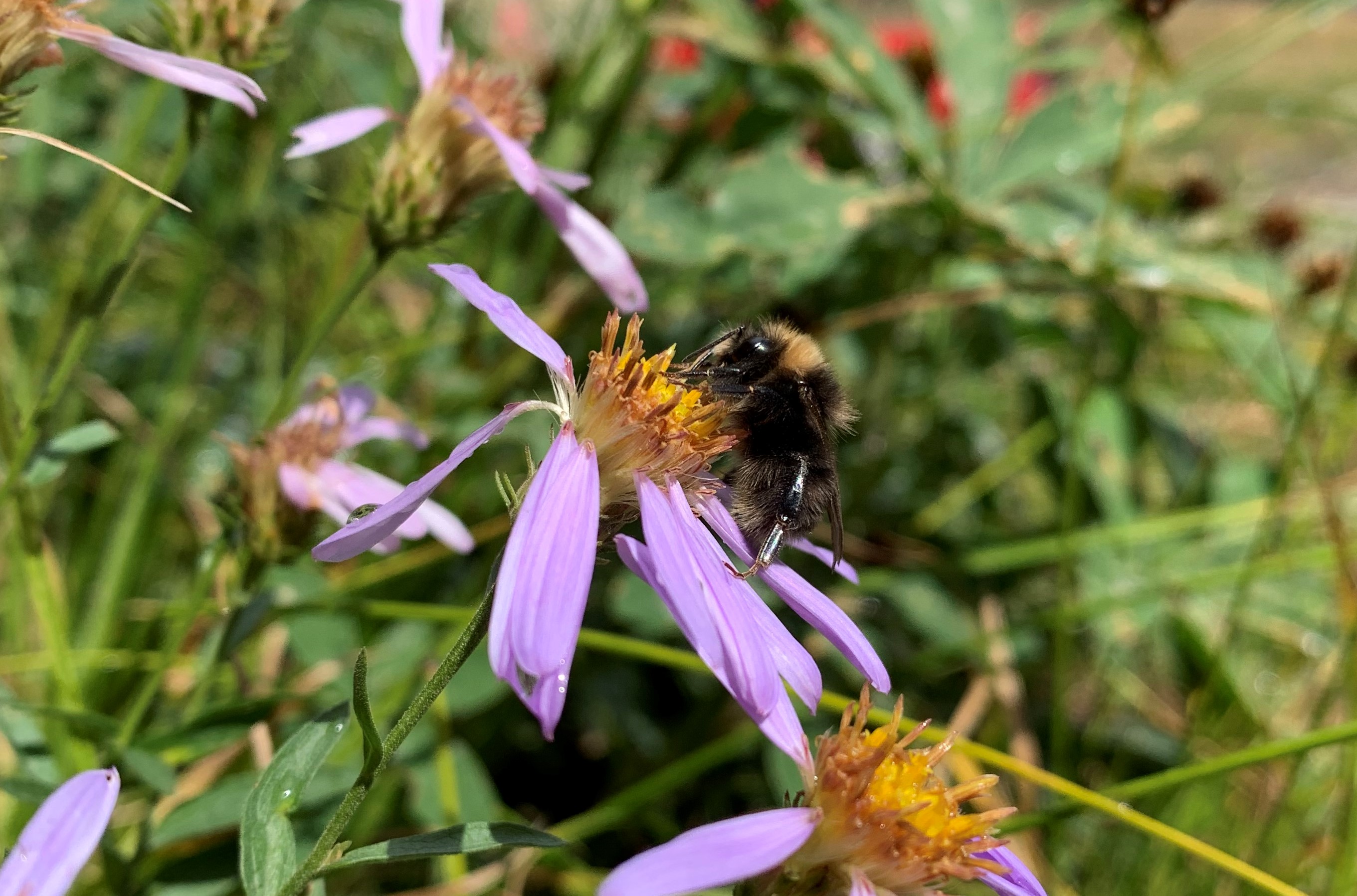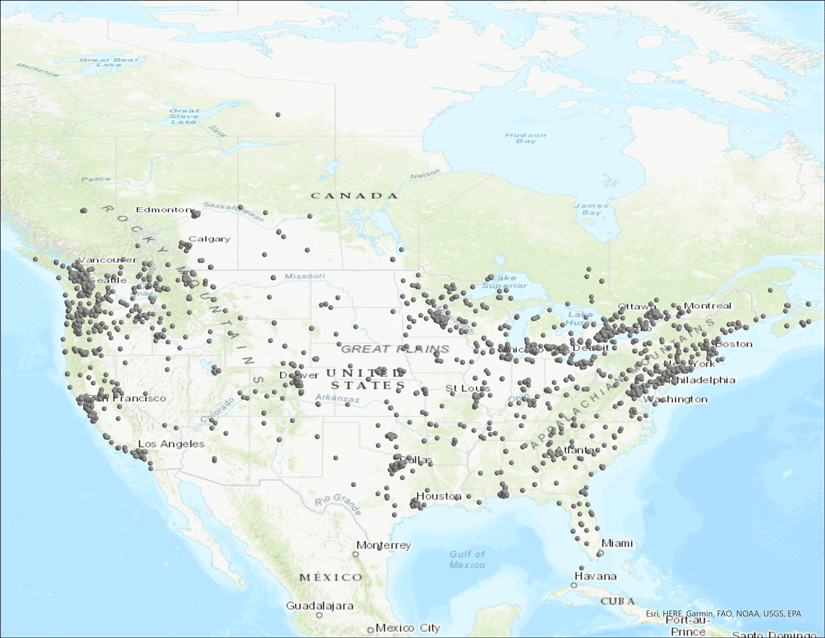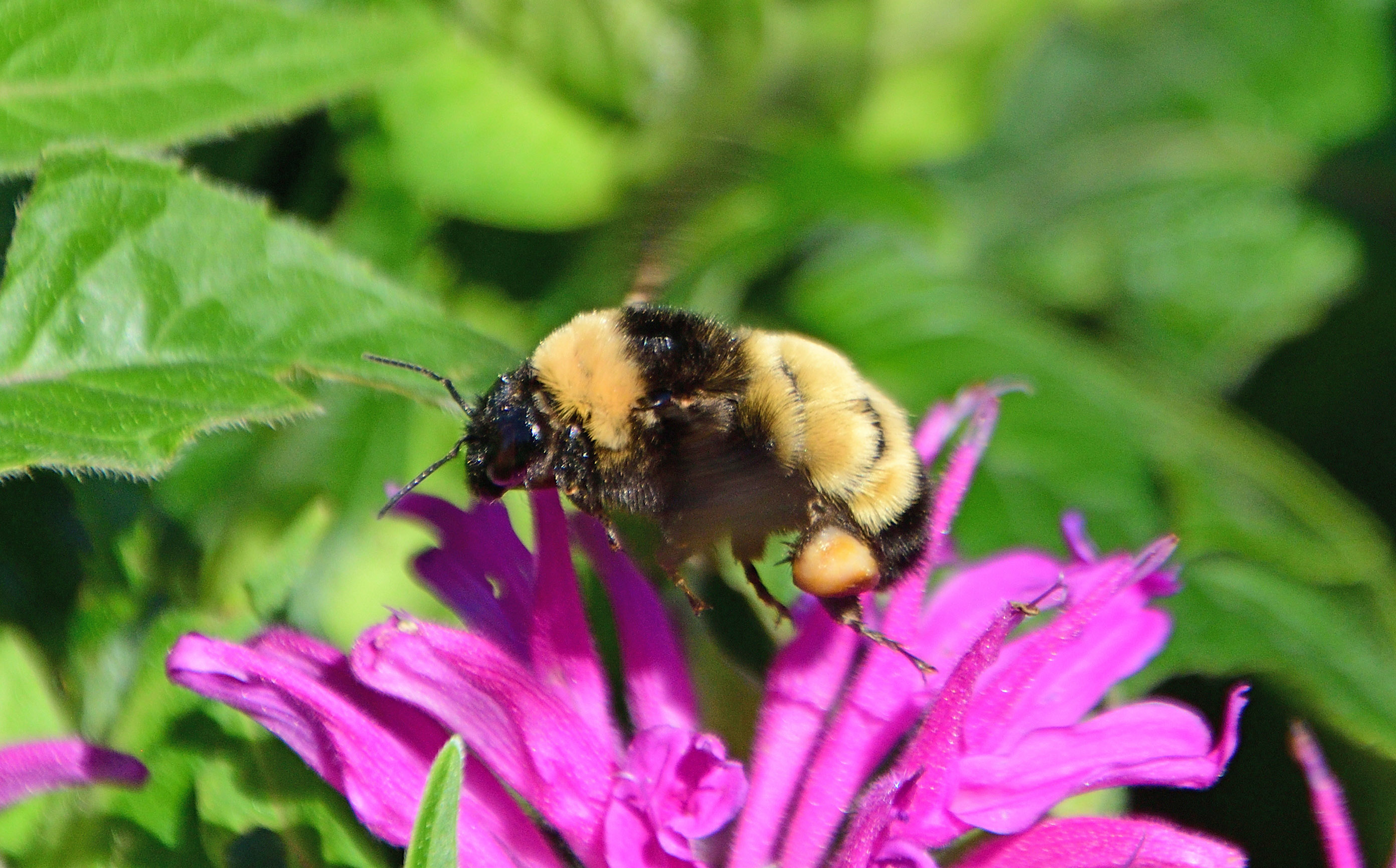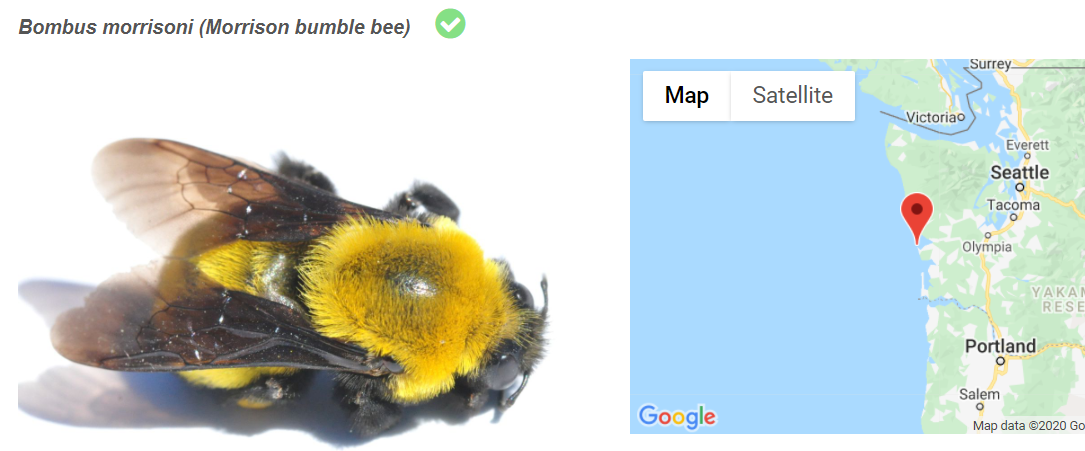Conserving Bumble Bees with Community-Based Atlas Projects
Over a decade ago the Xerces Society recognized the potential benefits that community scientists could bring to tracking bumble bees throughout North America. At that time (ca. 2008), we were interested in four species whose conservation status was uncertain and potentially concerning, the rusty patched, yellow banded, western, and Franklin’s bumble bees. The observations that were submitted confirmed what scientists had believed: the patterns of decline were troubling, and action was needed. Partially due to our advocacy informed by community science efforts, two of those species (rusty patched and Franklin’s) are now officially recognized as endangered by the US Fish and Wildlife Service.
Our early experience with community science highlighted its value, so we took it to the next level. Working with partners, in 2014 we launched Bumble Bee Watch to track all species of bumble bees and take advantage of a growing team of bumble bee observers. Since then Bumble Bee Watch has attracted more than 30,000 registered users whose nearly 75,000 observations throughout North America have shed light on bumble bee populations, where they are thriving, and on which plants they are foraging. All of this will help conservation biologists and ecologists address important questions about what we can do to help conserve these important animals.

Xerces’ bumble bee community science work started with a focus on four declining species, including the western bumble bee. This one was photographed during a survey on the slopes of Oregon’s Mt Hood. (Photo: Xerces Society / Matthew Shepherd.)
While Bumble Bee Watch is definitely a success story, one thing we noticed as the database grew in the early years was that observations were following a pattern that tracked human population density and transportation corridors—a common symptom of crowd-sourced data. While this information is great, it is not a complete picture of how bumble bees are doing in natural areas far from human influence, places where habitat might more closely match the conditions we hope to recreate. In consultation with other researchers we decided to spearhead a new way to use Bumble Bee Watch to collect data more systematically. Thus, with a variety of great partners, we launched the Pacific Northwest Bumble Bee Atlas (covering Idaho, Washington, and Oregon) in 2018, the Nebraska Bumble Bee Atlas in 2019, and the Missouri Bumble Bee Atlas in 2020. We will launch the California Bumble Bee Atlas next year—and we hope to have further atlases coming to additional states soon after that.
As a result of these regional atlas efforts in 2020 alone, more than 680 community scientists submitted over 10,000 bumble bee observations of at least 27 different species (the data from this year are still being verified by our team). The map below shows how the collective work of these volunteers fill state boundaries after the atlas efforts begin. The value of these comprehensive surveys are valuable now for conservation management, and will be invaluable far into the future as a clear baseline to which future conditions can be compared.

Yearly time series of Bumble Bee Watch submissions from 2014 to 2020. The states covered by regional atlas projects are highlighted in green the year they became active (2018: Idaho, Washington, and Oregon; 2019; Nebraska; 2020: Missouri). Data from BumbleBeeWatch.org.
One of the great outcomes of these atlas projects is the number of trained volunteers that we now have on the ground (and out in the landscape) monitoring bumble bees. We’ll be diving deeper into the data in the months ahead, so stay tuned for additional updates. But, just the sheer scale of the effort has already brought some surprising discoveries from 2020:
- For the first time that we are aware of, the American bumble bee (Bombus pensylvanicus) was observed in the state of Idaho. The closest observation of the American bumble bee is nearly 400 miles away in SE Utah.
- Morrison’s bumble bee (Bombus morrisoni) was observed on the coast of Washington. This was the only observation in the state of Washington, and well outside its known range (generally dry, sagebrush steppe habitat). The closest observation is over 200 miles away in central Oregon.
- The southern plains bumble bee (Bombus fraternus), a species of conservation concern, was detected throughout Missouri and Nebraska (54 observations). This species is listed as Endangered on the IUCN Red List.

This American bumble bee (Bombus pensylvanicus) was spotted in SE Idaho, the first record from that state and nearly 400 miles from the closest known location in Utah. Photo by Sue Braastad from BumbleBeeWatch.org.
It takes more than a village! When I step back and consider the amount of time, effort, and dedication it has taken to gather all of this information, I am astounded at, humbled by, and incredibly grateful for the combined achievement. Our atlas volunteers conducted nearly 950 45-minute surveys this year. That is over 700 hours of work, not considering the time it takes to travel to and from those locations, nor the time it takes to collect, process, and enter the data. In addition to our volunteers, we’re also lucky to have amazing partners and supporters in the Pacific Northwest, Nebraska, and Missouri. There is no question that it takes a lot of time to develop the resources and training materials necessary for these projects to run smoothly. But, the time is well spent as ultimately, it is the bumble bees that will benefit most. These surveys and bumble bee observations will help land managers throughout North America make more informed conservation and management decisions as we continue our sustained effort to protect, conserve, and restore habitat for bumble bees and other pollinators.

Morrison’s bumble bee (Bombus morrisoni) confirmed from the rainy coast of Washington, well outside its usual environment of dry sagebrush steppe. Photo by Kelly McAllister from BumbleBeeWatch.org.
Further Reading
Learn more about how to protect bumble bees.
Quick tips on how you can support the life cycle of bumble bees: Bumble Bee Conservation (brochure)
Detailed guidance on Conserving Bumble Bees by creating and managing habitat.
Regional lists of plants for bees (and butterflies).
IUCN Bumblebee Specialist Group




